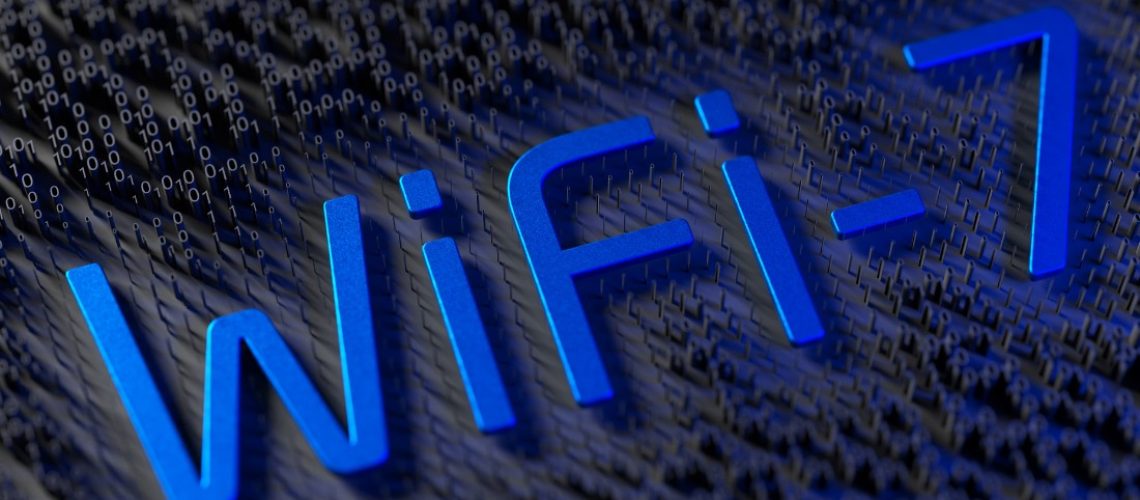Wi-Fi is an integral part of doing business. Employees depend on it to perform their jobs, and visitors expect it when they enter your building. With new advancements in technology, wireless networking is seeing greater improvements than ever before.
What is Wi-Fi 7?
Wi-Fi 7, also known as ‘Extremely High Throughput (EHT)’ or 802.11be, is the newest generation of wireless internet, succeeding Wi-Fi 6 and 6E. Released in 2019, Wi-Fi 6 significantly enhanced speed and reliability, revolutionizing teleconferencing, streaming, VR, and gaming. Just five years later, Wi-Fi 7 is taking these advancements even further, promising exponentially faster speeds and setting a new standard for wireless connectivity beyond any previous generation.
What does this mean? Wi-Fi 7 delivers faster downloads, seamless streaming, low-latency connections, and the ability to handle more connections simultaneously.
More specifically, Wi-Fi 7 is introducing the following capabilities:
- Speeds up to 45 Gbps,
- 320 MHz channel width for faster data transmission and reduced congestion in crowded networks &
- 4098 QAM technology for encoding more data in each signal, ensuring faster speeds and more reliable connections.
Ultimately, this new generation of Wi-Fi will provide advancements in areas such as multi-user AR/VR/XR, immersive 3-D training, electronic gaming, hybrid work, industrial IoT, and automotive.
Wi-Fi 5 vs Wi-Fi 6 vs Wi-Fi 6E vs Wi-Fi 7
| Release Year | IEEE Standard | Max Data Rates | Frequency Bands | Channel Size | |
| Wi-Fi 5 | 2014 | 802.11ac | <3.5 Gbps | 5 GHz | <160 MHz |
| Wi-Fi 6 | 2019 | 802.11ax | <9.6 Gbps | 2.4 GHz, 5 GHz | <160 MHz |
| Wi-Fi 6E | 2020 | 802.11ax | <9.6 Gbps | 2.4 GHz, 5 GHz, 6 GHz | <160 MHz |
| Wi-Fi 7 | 2024 | 802.11be | <45 Gbps | 2.4 GHz, 5 GHz, 6 GHz | <320 MHz |
BroadbandNow. (n.d.). Wi-Fi 5, 6, 7 upgrade guide. Retrieved [2024, April 22], from https://broadbandnow.com/guides/wi-fi-5-6-7-upgrade-guide
As you can see in the chart above, Wi-Fi 7 is bringing significant improvements to wireless connectivity. At up to 45 Gbps, Wi-Fi 7 offers a substantial increase in speed compared to its predecessors, which only offer up to 9.6 Gbps.
Furthermore, Wi-Fi 7’s 320 MHz channel width doubles the maximum channel widths available with other models. This enhancement allows for greater bandwidth, thus reducing the congestion and interference that crowded networks, such as large offices or apartment buildings, can bring.
What Devices Support Wi-Fi 7?
Wi-Fi 7 is backward compatible, meaning that even if your devices are not Wi-Fi 7 capable, they can still connect to a Wi-Fi 7 router, which helps ensure a smooth transition as you gradually update your devices to the new standard. However, you will need to upgrade your devices in order to get the latest features and benefit from the improved performance. This means purchasing new routers, access points, smartphones, laptops, TVs, etc.
Wi-Fi 7 Release Date
Wi-Fi 7 was officially released on January 8th, 2024. However, it will most likely take a few years for many to adapt to it. These new routers are a lot more expensive than previous models, costing several thousands of dollars or more. Before investing a large amount of your money, it’s very important to verify that the router is labeled as “Wi-Fi 7 Certified“.
Why Work with Digicorp?
In today’s business landscape, reliable Wi-Fi is a fundamental necessity. Digicorp’s team of engineers, along with the help of key partners, such as Cisco/Meraki, Aruba, and others, are here to design and implement the model of Wi-Fi that best fits your organization’s needs.
At Digicorp, our team of expert engineers collaborates with industry-leading partners like Cisco/Meraki, Aruba, and others to tailor Wi-Fi solutions precisely to your organization’s requirements. Whether you operate in K-12 education, large-scale retail, or demanding warehouse/manufacturing environments, we specialize in delivering cost-effective, secure, and customized Wi-Fi solutions that align with your organization’s unique needs.
Help Us Help You!
Fill out the form below, and let’s start the conversation!





